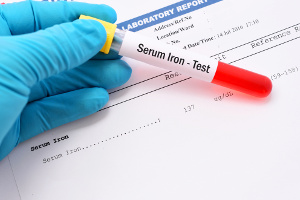What parents must know about iron deficiency in children
 Iron deficiency typically results in anemia. Anemic children and teenagers don’t necessarily have distinct symptoms but are often pale and tired. Children with iron deficiency are also at increased risk of stunted growth, which makes this mineral extremely important for the developing child. Iron from animal food sources have the best absorption in the body, which means that a strictly plant-based diet may result in an iron deficiency. The same is the case if you consume too many dairy products, according to an article published in the science journal, JAMA Pediatrics. Here, the authors write that it is crucial for children to get enough iron, and they explain how to avoid a deficiency.
Iron deficiency typically results in anemia. Anemic children and teenagers don’t necessarily have distinct symptoms but are often pale and tired. Children with iron deficiency are also at increased risk of stunted growth, which makes this mineral extremely important for the developing child. Iron from animal food sources have the best absorption in the body, which means that a strictly plant-based diet may result in an iron deficiency. The same is the case if you consume too many dairy products, according to an article published in the science journal, JAMA Pediatrics. Here, the authors write that it is crucial for children to get enough iron, and they explain how to avoid a deficiency.
Red blood cells carry oxygen from our lungs to all parts of our body. Cells need oxygen to produce energy and carry out numerous functions. Anemia is when the red blood cell count is too low, and this condition affects many different body functions. Anemia can be caused by a number of different things, and children who get too little dietary iron may develop iron deficiency anemia. Iron is a mineral that enables us to produce hemoglobin, which is the protein that binds oxygen in the red blood cells before the oxygen is transferred to the cells in the muscles, the heart, and in other tissues. Hemoglobin, with its content of iron, is what gives blood its characteristic red color.
Children and teenagers with iron deficiency anemia don’t necessarily have noticeable symptoms but are often pale and tired. Physical symptoms like rapid heartbeat, breathing difficulty, headache, and nausea may occur because the organs lack energy. Other symptoms such as irritability, poor concentration, and ADHD-like symptoms may also occur, although this can also be caused by other problems. Iron is important for growth, building of muscle tissue, immune defense, and basic brain processes, which is why a deficiency can result in stunted growth, lack of muscle mass, recurrent infections, and learning difficulty. It is even possible to be iron-deficient without being anemic.
Reasons why children and teenagers get iron deficiency anemia
The reason why children and teenagers get iron deficiency anemia is often that they get too little iron from their diets, or because their iron absorption is poor. Good iron sources include things like liver, meat, eggs, and fish. There is also iron in dark greens like spinach and beans, chickpeas, lentils, red beets, apricots, oats, and wholegrains. Animal food sources contain heme-iron that has better absorption in the body than non-heme iron from plant sources. Eating a strictly plant-based diet can easily result in an iron deficiency.
However, vitamin C enhances the body’s iron uptake, and some of the good sources of vitamin C are citrus fruits, berries, tomatoes, red bell pepper, broccoli, and herbs.
Eating too much calcium from milk and dairy products, on the other hand, blocks the uptake of iron. Therefore, children should be at least one year of age before being introduced to dairy products, and they should limit their intake of these foods. Children who are at risk of iron deficiency should not drink milk with their meals.
Children who are preterm, suffer from celiac disease, or have been exposed to lead poisoning also risk iron deficiency, and the same goes for teenage girls with heavy menstrual bleeding.
- Did you now that 40-50 percent of young girls in Denmark are iron-deficient?
Preventing and treating iron deficiency in children and teenagers
According to the health authorities, preterm babies or babies that weigh less than 2,500 grams at birth should get 8 mg of supplementary iron daily from the age of six weeks until they are six to 12 months old. Recommendations may vary so make sure to stick with the guidelines issued by the neonatal department. It is essential for the child to get plenty of iron in its weaning diet and when it is no longer gets breastmilk or infant formula.
It is normally not a problem to get enough iron from a balanced diet, but small children who don’t eat meat or fish should be given 8 mg of supplementary iron every day, either as drops or as chewable multivitamins that are crushed before they are given to the child.
There are iron supplements on the market that are based on nettles and other herbs that improve the absorption of iron.
If a child only gets vegetarian or vegan food, it is important to make sure to get iron from other sources.
A blood sample can tell if a child is iron-deficient or has iron deficiency anemia.
How much iron must children and teenagers get every day?
- 2-5 years: 8 mg
- 6-9 years: 9 mg
- 10 years and older: 11-14 mg
- Menstruating girls: 15-18 mg
References:
Patrick C. Touhy et al. What Parents Should Know About Iron-Deficiency Anemia in Children. JAMA Pediatrics. 2023
Jernmangel - Symptomer, Diagnose og Kosttilskud | dinApoteker.dk
Vejledning-til-sundhedspersonale-vedroerende-vitamin-og-jerntilskud-til-boern-under-2.ashx (sst.dk)
TIP! See also the related articles
Search for more information...
- Created on .








